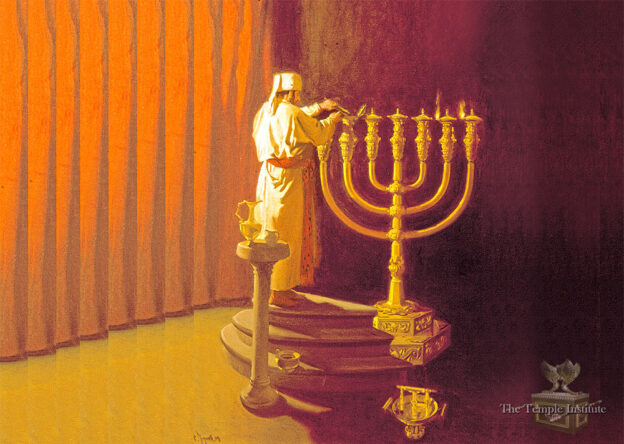Louisiana’s new law requiring the posting of the Aseres Hadibros in all public school classrooms disturbs me. Not because American children should revere the Commandments but for a different reason. Which you can read about here.


Louisiana’s new law requiring the posting of the Aseres Hadibros in all public school classrooms disturbs me. Not because American children should revere the Commandments but for a different reason. Which you can read about here.

Summer, for religious Jews, isn’t all barbecues and vacations. And the fast days we observe are particularly timely these days, when the Jewish connection to Eretz Yisrael is overlooked, or even denied, by some. You can read my thoughts about the matter here.

Supreme Court Justice Samuel Alito was born in Trenton, New Jersey, is 74 years old… and… sit down if you must… is a social conservative!
Who knew?
To read why I wax somewhat cynical regarding that revelation, click here.

The Torah’s narratives are pertinent to every generation. But certain accounts resonate particularly blatantly in certain times.
Like the saga of the ma’apilim, the “insisters,” those Jews in the desert who repented of having spoken negatively of Eretz Yisrael and insisted, even against Moshe’s warning, on short-circuiting (pun intended) the prescribed years of desert wandering and “going up” into the Holy Land immediately.
Some, like the Munkatcher Rebbe Rabbi Chaim Elazar Spira, a fierce opponent of nascent religious Zionism during the early 1900s, saw in the ma’apilim a precursor of “those sects that went up to Eretz Yisrael by force to establish colonies and wage war against the nations.”
Rav Tzadok HaCohein, who died in 1900, had a very different approach. He wrote that the ma’apilim felt that, despite the warning against going directly into the land, it was a case of “Whatever the host tells you to do, heed him, except when he says ‘leave’” [Pesachim 86b].
Although the provenance of that text’s final phrase – “except when he he says ‘leave’” – is questioned by some commentaries, the idea Rav Tzadok means to convey is that the ma’apilim felt justified in disobeying the Divine order, that their plan was in fact ultimately consonant with the Divine will.
But, while they had a point, Rav Tzakok continues, it was not the right time for such brash action. Noting the first word in Moshe’s admonition that “it [the plan] will not succeed,” Rav Tzadok writes: The word ‘it’ is often interpreted by Chazal to mean ‘it, but not another,’ [here] implying that at another time [in history] ‘it will succeed’.”
And, he concludes, “that is our time, the era leading to Mashiach.”
That era has proven prolonged. And the state of Israel is a reality. The question of whether its establishment was a wise endeavor or a dangerous one is moot today. We can only hope that the redemption Rav Tzadok saw implied by the pasuk – even if it didn’t take place in the 1900s – will happen soon, speedily, in our days.
© 2014 Rabbi Avi Shafran

Professor David Himbara called South Africa “a classic case of a de facto one-party state with mismanaged institutions and endemic crime and corruption.” It’s also a state with much racism and anti-Israelism. Its president, Cyril Ramaphosa, has been a driver of those sins. Is there hope for the future? My thoughts are here.

Something special about Aharon HaCohein is telegraphed in the sentence “And Aharon did so,” after Moshe’s brother receives instructions about lighting the menorah in the Mishkan (Bamidbar 8:3). Rashi, paraphrasing Sifri, comments: “This tells us the praiseworthiness of Aharon, that he didn’t change [anything in the service].”
Well, of course he followed Divine orders carefully, puzzle many commentators. What is the significance of stating the obvious fact?
An interesting approach is offered by the Chasam Sofer. The Talmud, he points out, describes the daily schedule of service in the Mishkan and Beis HaMikdash and notes, inter alia, two things: that the menorah-lighting takes place simultaneously with the burning of the afternoon incense on the mizbei’ach haketores (Yoma 15a); and that the cohein bringing the ketores would become wealthy as a result of performing that service (Yoma 26a).
Thus, suggests the Chasam Sofer, Aharon’s “not changing” means that he never took a day off from the menorah-lighting, which he could have allowed someone else to do, to take advantage of the wealth-producing ketores-offering. In other words, he shunned material gain that was available to him.
A simpler approach is taken by R’ Simcha Bunim of Peshischa, who interprets Rashi’s comment as “And Aharon didn’t change himself.”
“Power tends to corrupt,” British historian Lord Acton famously wrote in 1887. That adage – as true about fame and privilege as it is about power – has been borne out by countless examples since and presently.
Aharon, however, despite the new exalted status he had received, born of the special mitzvah entrusted to him, remained… Aharon.
© 2024 Rabbi Avi Shafran

To some, chumros, or stringencies beyond what halacha requires, are always laudable. But in the Vidui Rabbeinu Nissim, recited on Yom Kippur Katan, we confess, amid actual sins, that “What You declared pure I declared impure… what You permitted I forbade…”
So what makes a chumra proper?
I suggest it’s the intent. If a chumra is motivated by love of Hashem, it is praiseworthy. If motivated by neurosis or by a “holier than thou” or other self-serving attitude, it is worthy only of repentance.
The Gemara (Brachos 20b) recounts a conversation between Hashem and angels. The latter protest that, although Moshe declared that Hashem does not show nesias panim, special favor (Devarim 10:17), in Birchas Cohanim, in our parsha, it states Yisa Hashem panav eilecha – “May Hashem show you special favor…” (Bamidbar 6:26).
Hashem’s response: “How can I not show Klal Yisrael favor when, despite the requirement of satiation for reciting Birchas Hamazon, they do so even after eating a mere olive or egg’s volume?”
How does that address the complaint? And what right do we even have to say Birchas Hamazon if we’re not satiated? I think what is being conveyed is that Klal Yisrael, out of love for Hashem, considers itself satiated even with a meager portion of food – a “chumra,” so to speak, a venture beyond the norm – which in turn merits a parallel “beyond the norm” on Hashem’s part, in His showing us special favor.
I wonder if that may be why, in the bracha the cohanim make before Birchas Cohanim, the word “bi’ahava,” “with love,” is appended. Could it be because love is what merits it and love is what it expresses?
And I wonder further if a hint to that word’s being added to the bracha lies in the unnecessary letter vav in the word emor (ibid 6:23), “Say,” that introduces Birchas Cohanim. For vav means something that bonds two things (Shemos 27:10) – and the letter itself, used throughout the Torah, meaning “and,” bonds the word before and the one after it.
And Birchas Cohanim bespeaks a bond, a bond of love.
© 2024 Rabbi Avi Shafran

The effort to educate American young people about the hate-born evil that engulfed much of Europe in the 1930s and 1940s has been something less than a resounding success. I have a suggestion about what to replace Holocaust units with. You can read about it here.

The census of the Levi’im differs from that of the other shevatim, in that the latter counted only males 20 years of age or older while the former included even 30-day-old babies.
The inclusion of even infants in the Levi’im count is particularly striking, considering that the role of those counted is “mishmeres mishkan ha’eidus” – the guarding, or protection, of the sanctuary. A baby can’t protect anyone; he himself needs protection.
The most compelling explanation, offered by, among others, the Avnei Azel (Alexander Zushia Friedman, the author of the Ma’ayana Shel Torah compendium), is that the guarding here is not born of physical strength. The very existence of viable Levi’im is itself what offers protection. The security is sourced in the spiritual.
In Rabbi Friedman’s (loosely translated) words: “It is a common mistake that some make by assuming that the interests of the Jewish nation can be protected through martial and political means. Only the holiness and spiritual power of the guardians can actually offer protection… ‘If Hashem will not guard the city, for nought does the guard stand vigil’ (Tehillim 127:1)”
Rav Aharon Feldman, shlit”a, the Rosh Hayeshiva of Yeshivas Ner Yisrael in Baltimore, recently penned a heartfelt, elegiac essay about the security failures that allowed the tragedy of October 7 to happen, and how the future fate of the Jewish people in Eretz Yisrael (and everywhere) is dependent on the nation’s embracing its role as Hashem’s chosen people.
Based on the warnings and lamentations of the nevi’im, Rav Feldman imagines Hashem saying: “I… decided to wake you up with a powerful shock. I wanted you to realize that hitherto you were successful in your wars and in building up My land, not because of your cleverness or your army, but because I watched over you and granted you success. I wanted you to see that when I removed my support for you for a moment, your cleverness disappeared and your army fell to pieces.”
The essay shocked some in its straightforwardness. Stark truths are often shocking. But the Rosh Yeshiva’s rumination should not have surprised anyone. It was only the echo of Dovid Hamelech’s declaration above, and of the implication of the fact that even a baby among the Levi’im can be a conduit of Divine protection.
© 2024 Rabbi Avi Shafran

Has President Biden, as his arms delay and words of warning were described in some media, “abandoned” Israel? Or is he still the stalwart defender of Israel’s right to destroy her declared mortal enemy that he declared himself to be in the wake of the October 7 massacre?
My thoughts are here.